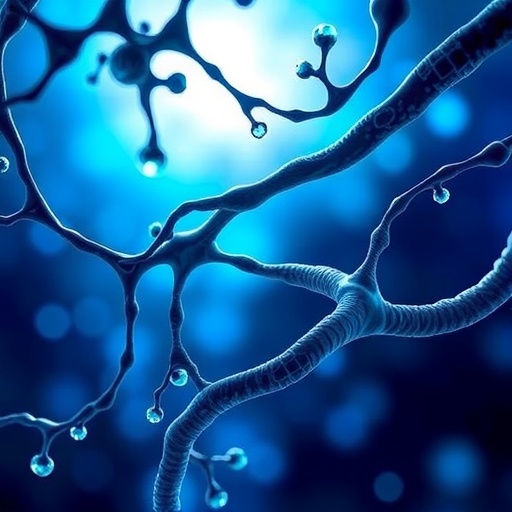The RTN, situated at the interface between the thalamus and cerebral cortex, functions primarily as a gatekeeper of sensory information, regulating the flow of incoming stimuli to higher brain regions. Despite previous knowledge linking thalamocortical dysfunction to autism, the precise contributions of RTN hyperexcitability remained elusive until now. Utilizing a well-established Cntnap2 knockout mouse model, which genetically replicates key features of ASD, the research team meticulously recorded neural activity and observed corresponding behaviors.
These genetically modified mice exhibited pronounced increases in RTN neuronal firing rates upon exposure to sensory triggers such as light flashes and air puffs. Even more compelling, the RTN displayed spontaneous bursts of hyperactivity that precipitated seizure events—offering a tangible neural substrate for the elevated co-occurrence of epilepsy in individuals with autism. Indeed, epidemiological data indicate epilepsy affects approximately 30% of people with ASD, starkly contrasting with a 1% prevalence in the general population.
.adsslot_SYbDTwIHGZ{width:728px !important;height:90px !important;}
@media(max-width:1199px){ .adsslot_SYbDTwIHGZ{width:468px !important;height:60px !important;}
}
@media(max-width:767px){ .adsslot_SYbDTwIHGZ{width:320px !important;height:50px !important;}
}
ADVERTISEMENT
Capitalizing on these insights, the researchers administered an experimental antiepileptic drug called Z944, which selectively dampens T-type calcium channel activity implicated in RTN neuron excitability. Remarkably, treatment with Z944 normalized the neural hyperactivity within the RTN and substantially ameliorated autism-like phenotypes in the mouse model. These improvements encompassed reduced sensitivity to external sensory stimuli, diminished seizure susceptibility, decreased repetitive motor behaviors, and enhanced social interaction metrics.
To probe causality more rigorously, the team employed designer receptors exclusively activated by designer drugs (DREADD)-based neuromodulation techniques to either suppress or enhance RTN activity. Suppression of RTN hyperexcitability in autism-model mice recapitulated the beneficial effects seen with pharmacotherapy, while artificially increasing RTN activity in neurotypical mice induced autism-like behavioral deficits. This bidirectional control firmly establishes RTN hyperexcitability as a pivotal mechanistic driver of the observed symptomatology.
This elegant convergence of pharmacogenetics, electrophysiology, and behavioral neuroscience positions the RTN as a novel and promising therapeutic target. Unlike generalized approaches that lack circuit specificity, interventions tuned to normalize RTN function could potentially rectify the sensory processing abnormalities and social deficits hallmarking autism. Moreover, given that Z944 and related compounds are already under exploration for epilepsy treatment, translational hurdles may be minimized, accelerating clinical applications.
The study also illuminates the neurobiological overlap between ASD and epilepsy, suggesting that hyperexcitability within RTN circuits constitutes a shared pathological nexus. This insight may help explain the frequent comorbidity observed between these disorders and invite integrated therapeutic strategies addressing both symptom domains simultaneously.
These findings mark a substantial advancement in the neuroscience of autism, emphasizing the importance of subcortical structures like the RTN in shaping complex behavioral phenotypes. Historically, much ASD research has focused on cortical and synaptic abnormalities; however, this work highlights how dysfunction in sensory gating mechanisms contributes critically to the disorder’s clinical presentation.
Further research is warranted to elucidate the molecular underpinnings driving RTN hyperexcitability in autism models and to determine whether similar patterns manifest in human patients. Longitudinal studies examining the developmental trajectory of RTN activity may also reveal key windows for intervention. Additionally, expanding this neuromodulatory approach to other animal models will be critical to validate the generalizability of the findings.
In sum, the identification of RTN hyperexcitability as a causal factor in autism spectrum behaviors offers a beacon of hope for novel, circuit-targeted treatments. By bridging the gap between basic neuroscience and clinical therapeutics, this research elevates our prospects for mitigating the multifaceted challenges posed by autism.
Subject of Research: Neurological mechanisms underlying autism spectrum disorder, focusing on the reticular thalamic nucleus and its role in sensory processing and behavior modulation.
Article Title: Reticular Thalamic Hyperexcitability Drives Autism Spectrum Disorder Behaviors in the Cntnap2 Model of Autism
News Publication Date: 20-Aug-2025
Web References:
https://www.science.org/doi/10.1126/sciadv.adw4682
References:
Huguenard, J., Jang, S.-S., et al. (2025). Reticular Thalamic Hyperexcitability Drives Autism Spectrum Disorder Behaviors in the Cntnap2 Model of Autism. Science Advances, DOI:10.1126/sciadv.adw4682.
Keywords: Autism, Epilepsy, Reticular Thalamic Nucleus, Cntnap2, Neuromodulation, Sensory Gating, Seizures, T-type Calcium Channels, DREADD, Behavioral Neuroscience
Tags: autism symptoms reversal with epilepsy drugsbrain circuitry and autism behaviorsCntnap2 knockout mouse model studyepilepsy and autism connectionepilepsy prevalence in autism spectrum disorderneurological circuits in autism researchreticular thalamic nucleus role in autismRTN hyperactivity and seizure correlationsensory information processing in autismStanford Medicine autism researchtargeted treatments for autism spectrum disorderthalamocortical dysfunction in autism





